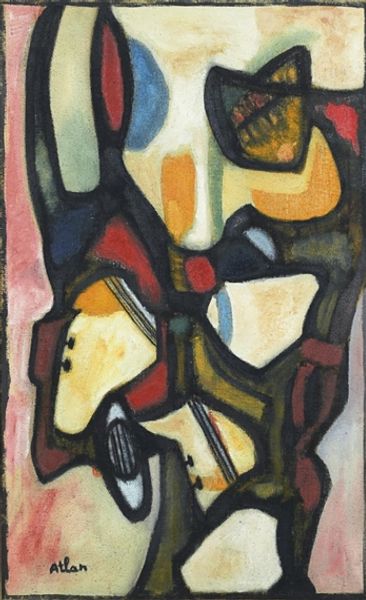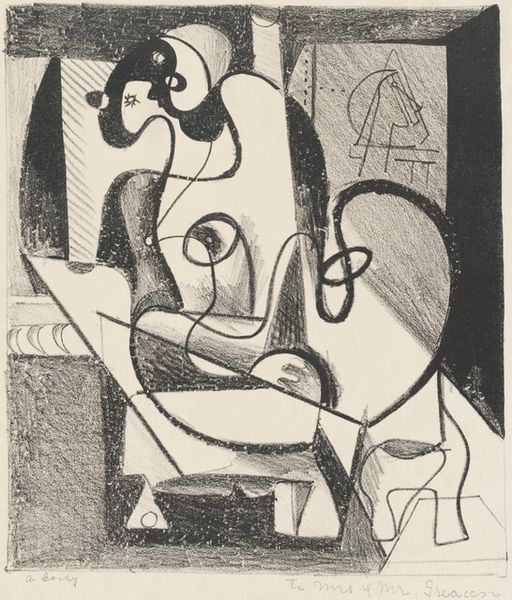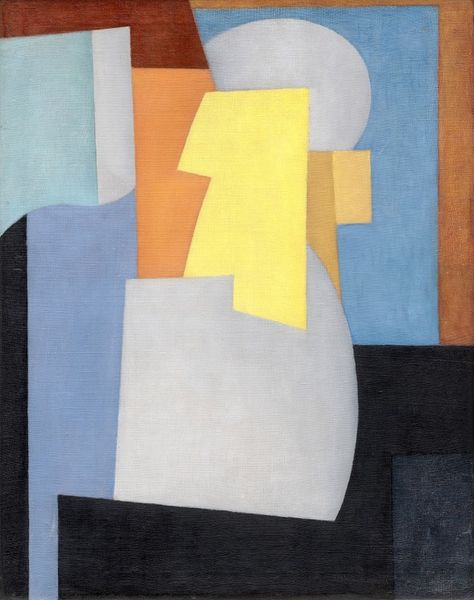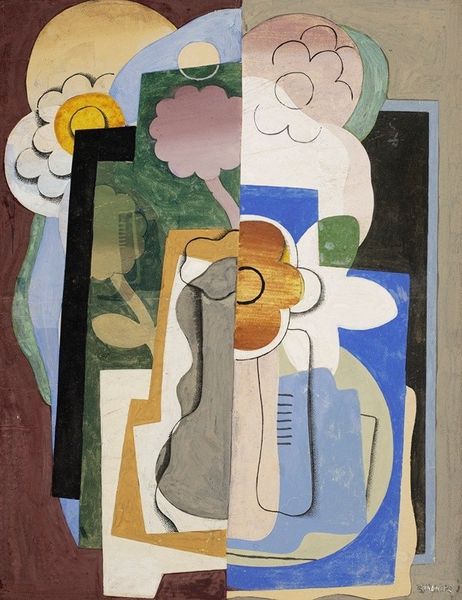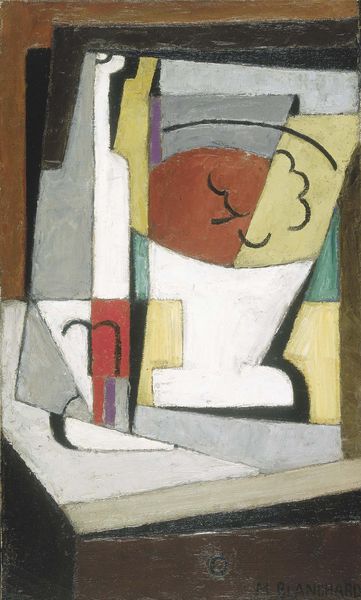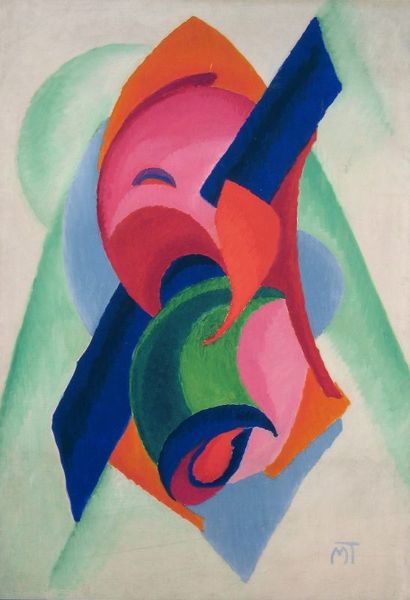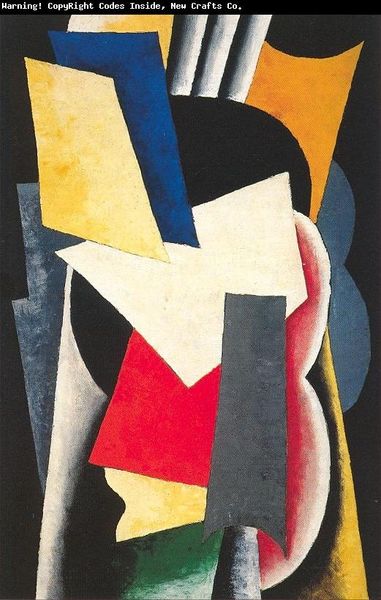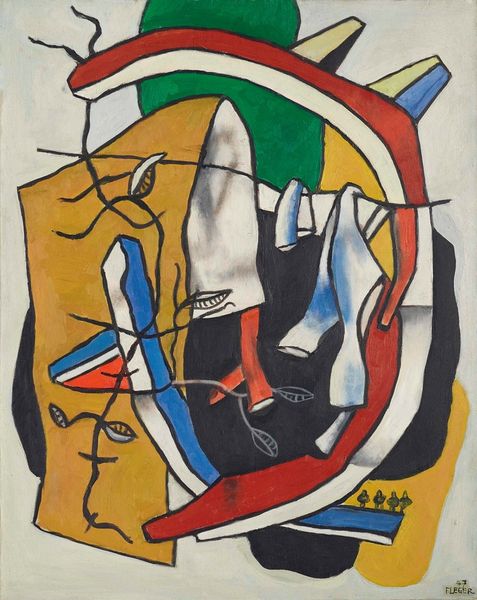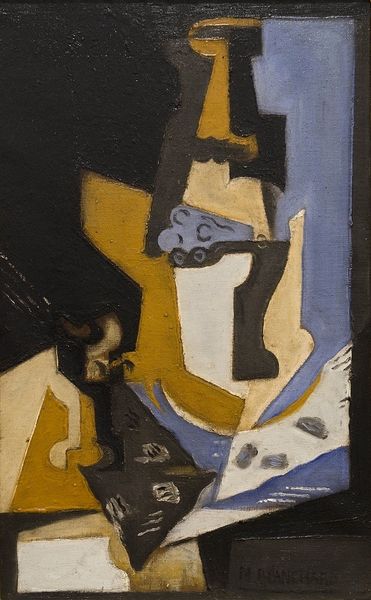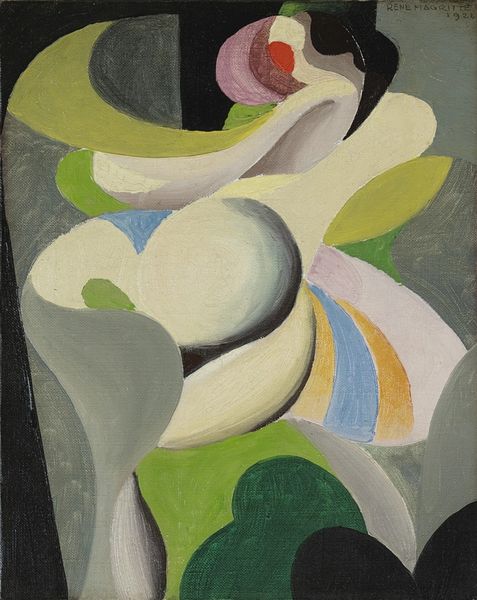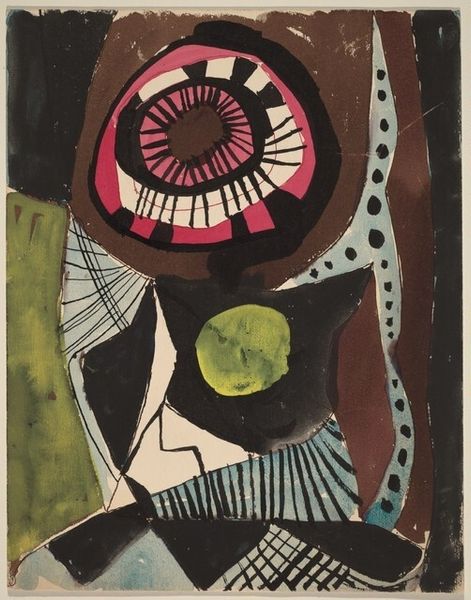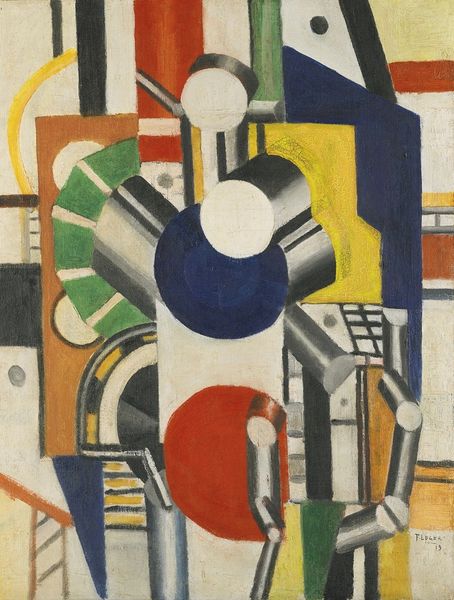
painting, watercolor
#
cubism
#
painting
#
caricature
#
pop art
#
abstract
#
form
#
watercolor
#
geometric
#
line
#
portrait art
#
modernism
Copyright: Modern Artists: Artvee
Curator: Welcome. We're standing before Fernand Léger’s "Les Buches," created in 1952, a piece that employs watercolor and ink to explore themes prevalent in his later work. Editor: Immediately, what grabs me are the confident lines. They have this playful brawniness, like happy robots made of firewood. Is it just me, or is there something cartoonish and celebratory about it? Curator: Léger, following his experiences in both World Wars, increasingly aimed for an art accessible to all, drawing from the everyday experiences of the working class. He called it "peasant classicism," blending modernist abstraction with accessible subject matter. Editor: Right. It's a still life, but so simplified. Those logs become pure form, and that juicy lemon-yellow sphere—talk about boldness. I can almost smell the damp wood and the citrus sharpness together. Curator: Absolutely, and in "Les Buches," Lèger is reflecting on the idea of using everyday objects as monumentalized forms. Note, for instance, the heavy black lines defining the logs and the subtle gradations of the watercolor washes—particularly in the background. Editor: The colors, simple as they are, just sing together, don't they? A bit Pop Art before Pop Art was even a proper *thing.* And I get a real sense of depth, too, with how some of the logs push forward. The more you look the more it feels, and then it also kinda feels almost child-like in a beautiful way! Curator: That childlike approach you pinpoint underscores something really critical here about Léger’s work in post-war France, which sought to engage the audience. He wanted something both accessible and striking, and was definitely concerned with reaching audiences previously shut out by 'high art.' Editor: Seeing that now is, um, truly great. When you frame it that way, this piece comes alive in a new way. It suddenly feels way bigger, less quiet. Like a quiet manifesto of accessible joy. Curator: A fitting observation. Thank you. It reveals how even seemingly straightforward pieces often carry layers of intentionality. Editor: Agreed! I won’t look at firewood the same again.
Comments
No comments
Be the first to comment and join the conversation on the ultimate creative platform.
